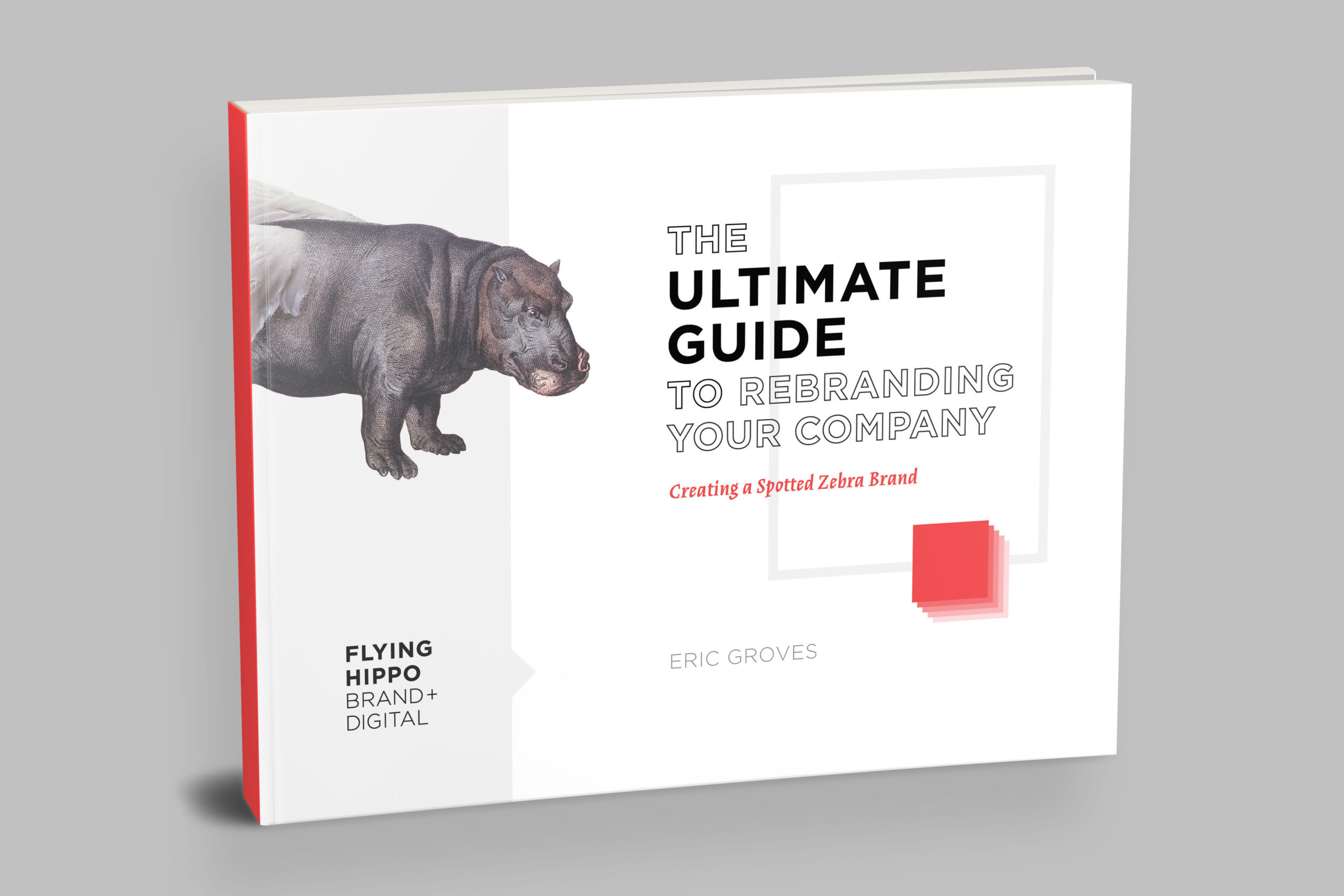 Branding
Branding
The Business Of Brand: An Insider’s Look At The Rebranding Process
An Expert’s Account of the Rebranding Process
You’re looking to give your company a fresh brand make-over. You’re excited about the potential impact it will have on your company’s overall perception and marketing efforts, but the process seems daunting. Never fear! We’ll give you an insider’s look into the rebranding process.
The process of rebranding will be similar with any good branding agency. Typically, the rebranding process involves the following phases:
- Research and Discovery
- Planning
- Creative Implementation
- Brand Roll Out
Download our FREE EBook: The Ultimate Guide to Rebranding Your Business.
Research and Discovery
The research and discovery phase will involve your agency taking you through a series of exercises, workshops, and interviews to get to the essence of your brand’s unique characteristics and meaning. At the end of the discovery phase, the agency should deliver some sort of documentation, such as a Brand Platform Guide, that takes the findings and articulates them into definable statements such as your Brand Promise, Brand Personality Attributes, Brand Positioning, Target Brand Personas, etc.
Every firm has its own take on the discovery process, the types of workshops offered and the various discovery tools they use. This process can vary greatly depending on the size and complexity of the company, and the various services, products, and offerings they have. A good branding firm will be able to listen to the overall business objectives for the rebrand and design a discovery process that meets your specific needs.
You and your team must be committed to attend the workshop(s) and be available for interviews in order to provide as much information as possible to inform the process. You may also be asked to provide permission for your agency to interview existing customers, employees, and other stakeholders to further inform the branding efforts.
Planning
Once the discovery process is complete, a plan should be created by your agency that outlines the specific branding initiatives as well as the associated costs, milestones, and schedules.
Creative Implementation
Once the plan, pricing, and schedules are in place, your agency will begin creating all of the various components of your rebrand. This is the exciting part, as you begin to see the new brand come to life. Although no two projects are the same, your rebrand efforts should consist of some/most of the following:
- Brand Persona Development
- Brand personas are semi-fictional representations of your ideal customers or targets that outline their motivations, personality traits, and values. Having clear pictures of your target audiences is critical to brand success.
- Brand Voice Architecture and Messaging
- The way your brand sounds is just as important as the way it looks. Components of brand voice include naming, tagline, key messaging, and long-form tone and attitude. The goal is to create a brand voice and messaging architecture that is likable and engaging to best attract your brand personas.
- Brand Style Architecture and Prototypes
- This process involves developing the visual architecture for your brand. This process typically involves mood boards, color palette determinations, typography solutions, photography style suggestions, patterns, and textures, as well as any other style determinations necessary to build out the brand style.
- Marketing and Communications Collateral
- Every brand has touchpoints with its customers, employees, and various other stakeholders. Your rebrand should ensure that all of these external and internal touchpoints are considered. Examples would include various marketing collateral, presentation materials, employee communications, etc.
- Website
- Your website is the most important branding touchpoint in today’s digital world. It’s the place where customers make the decision to learn more about you and often is your first (and maybe only) chance to connect with them.
- Photography
- Photography guidelines and usage are a part of any good rebrand. The story you tell through photography must be intentional and connect emotionally with your audience.
- Video
- If video isn’t part of your branding and marketing mix, it’s high time you start. Telling your brand story through video is one of the most powerful ways to connect with your audience as more and more users are seeing videos on every platform.
- Brand Rollout Materials
- This involves strategizing together on how to best roll out the new brand to all of your stakeholders. There are two phases to a rebrand launch: first, an internal phase to get buy-in and then an external phase to let the world know.
- Other
- Other areas of your rebrand could include trade show displays, vehicles, office environment, packaging, naming, etc.
Brand Rollout
Let’s Give Them Something to Talk About
Once the hard work is over, it’s time to roll out the brand for all to see! There are two phases to a rebrand launch: first an internal phase and then an external phase.
Internal Rollout: Brand Buy-In
Your employees are your brand’s most important ambassadors. They are the brand’s storytellers on the front lines, so it’s imperative they embrace its new chapter. An internal rollout gets them all on board and excited about the rebrand. It’s essential you communicate the objective and purpose of the rebrand as connecting to a more meaningful purpose rather than just the need to refresh your logo. An internal rollout celebration party may include Powerpoint presentation, banners, branded swag, and gifts that help everyone embrace the new initiative and rally around the new persona.
External Rollout: Brand Launch
After the internal rollout, it’s time for the external rebranding launch. Externally, your new brand creates a unique marketing opportunity and a strategic plan should be developed so that key stakeholders such as clients, prospects, vendors, etc., are invited into the new brand. Tactics may include everything from email blasts and press releases to social media and events that create a widespread buzz about the new brand to the world.
From this point forward, maintaining your new brand is an ongoing process of measuring, analyzing, and refinement with your agency.
Finding the Right Agency
Knowing that you need to rebrand is the first step in the journey. Finding a great agency to help you through the process is the next important step. You’re going to spend a lot of time and money with the agency you choose, so choose wisely. The three most important things to consider are:
- 1. How does their own brand come across?
- If they can’t create a compelling, engaging brand for themselves, you need to ask yourself, how will they do it for me? You don’t want to work with an agency that can talk-the-talk, but not walk-the-walk.
- 2. How good are their case studies?
- Look carefully at their case studies. Just as with their own branding efforts, their case studies should wow you. If not, keep looking.
- 3. Is it a personality fit?
- Assuming they pass muster on the first two criteria, you need to assess whether or not you think the personality fit will work. You’ll be spending many months with the agency, so make sure to get references and trust your gut on whether or not the relationship will work.
If you haven’t yet decided on your branding agency (shameless plug warning!), please consider Flying Hippo as one of your candidates. We’d love to chat.
Eric Groves is the Founder and Creative Director of Flying Hippo Brand + Digital. Should you decide it’s time to take your brand to another level, please reach out for a free consultation.


